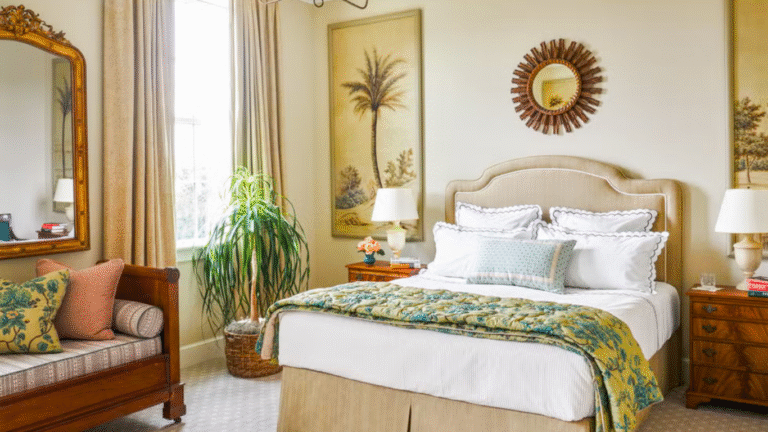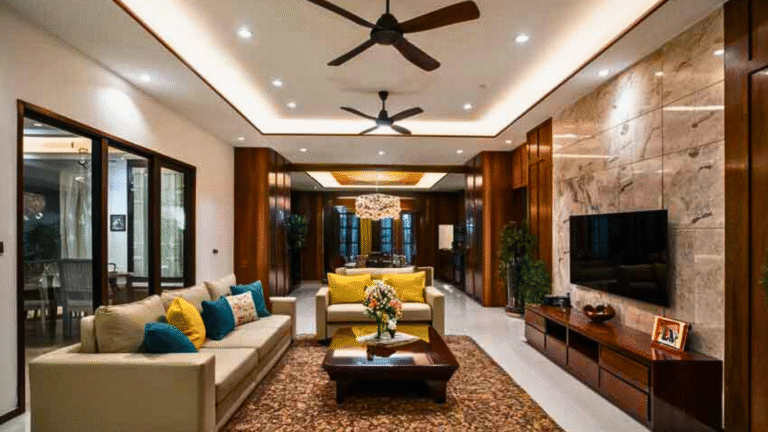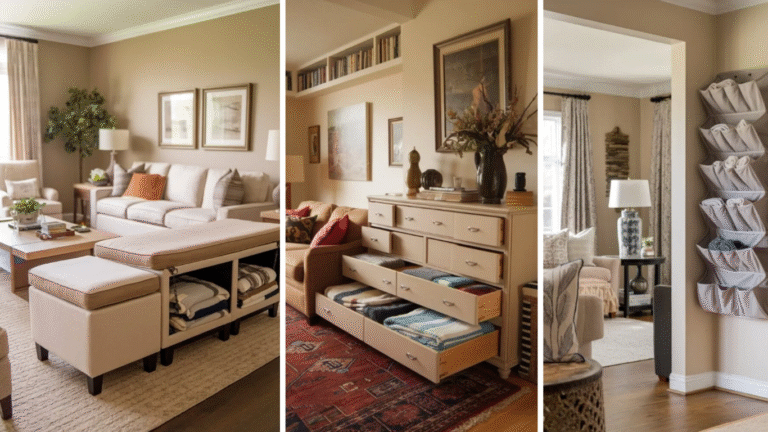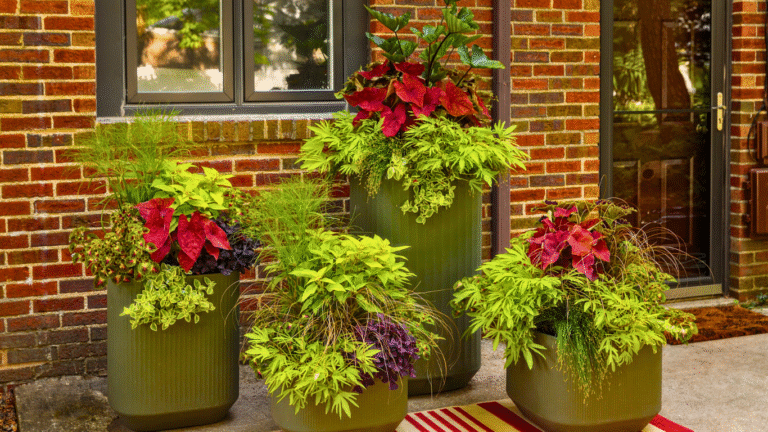10 Ways to Use Lighting to Define Different Spaces in an Open-Concept Home
1. Use Pendant Lights to Mark the Kitchen Island

Pendant lights are perfect for highlighting your kitchen island. Hang two or three in a row above the island to make it stand out. This sets the kitchen apart from nearby spaces like the dining or living area. Pendant lights also help focus attention when preparing food or gathering with family.
Try matching the metal or color with nearby fixtures for a balanced look. It’s a simple trick that brings both style and structure to your home.
2. Add a Chandelier Over the Dining Table

Placing a chandelier above your dining table instantly defines the dining zone. It draws attention to the table and creates a cozy, central meal spot. The overhead light makes the area feel special whether you choose something fancy or simple.
It also helps create a sense of purpose in an otherwise open room. Just ensure the chandelier size fits your table—not too big or too small.
3. Try Recessed Lighting for Seamless Separation
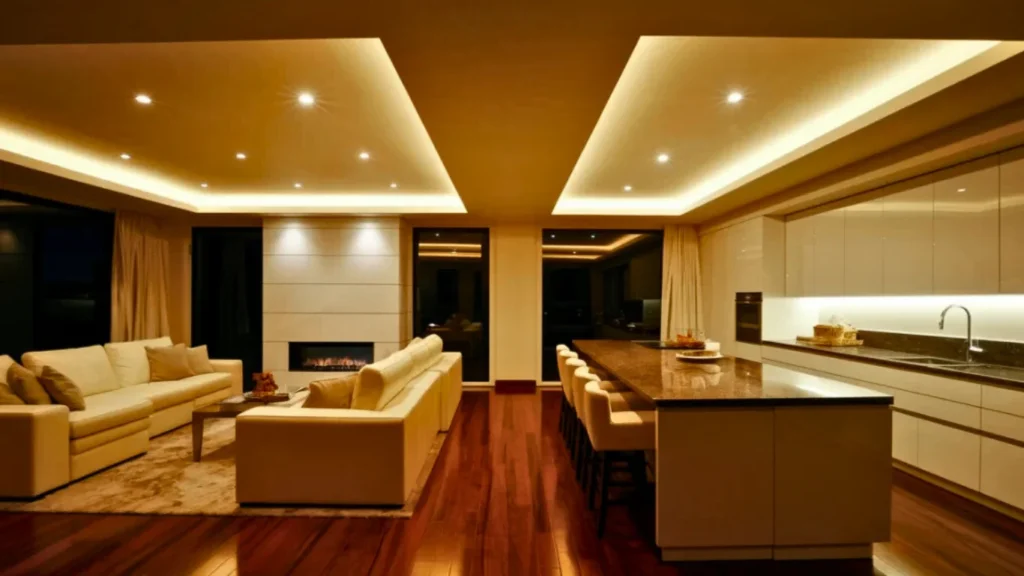
Recessed lighting is a sleek way to zone your home without adding clutter. You can arrange lights in groups to match each area, like one layout over the kitchen and another over the living space.
This makes it easy to tell where each room begins and ends. These lights sit inside the ceiling, keeping the space open and clean. They’re great for modern, minimal styles.
4. Define a Cozy Corner with Lighting

Task lighting can turn any corner into a usable space. A floor lamp beside a chair makes the perfect reading nook, and a desk lamp on a table turns a small area into a quiet work zone.
These lights are focused and direct, helping the spot feel separate even in an open layout. They’re a great way to give small areas a clear function without building walls.
5. Use Track or Uplighting to Guide the Eye
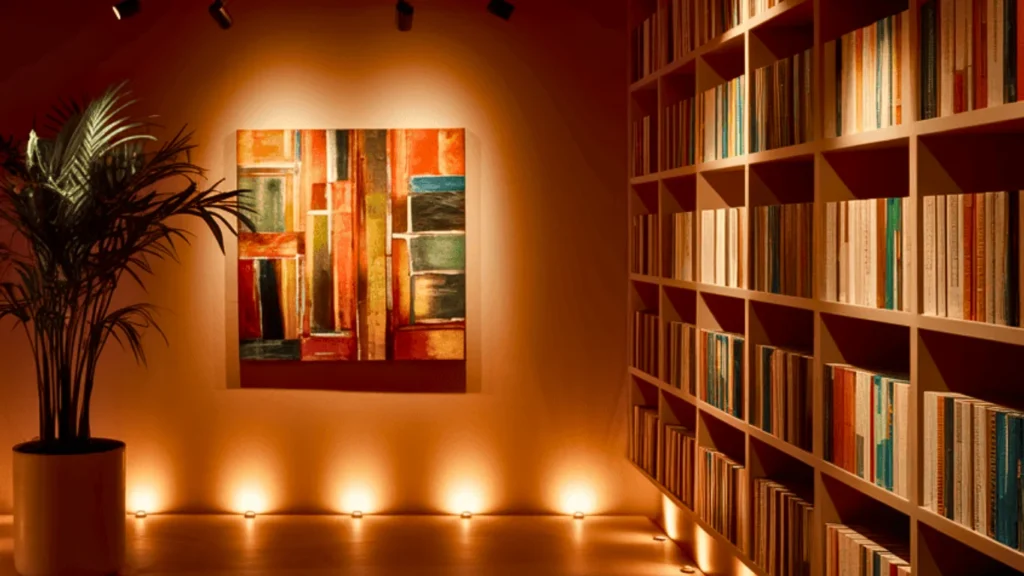
Track lighting and floor uplights help lead your eye around the space. They can follow the shape of a room or shine on art, plants, or furniture. This breaks the room into visual sections, even if it’s all one big space.
These lights also add some drama, especially at night. Try using them to highlight features you love and want to draw attention to.
6. Light Up Open Shelving to Separate Spaces
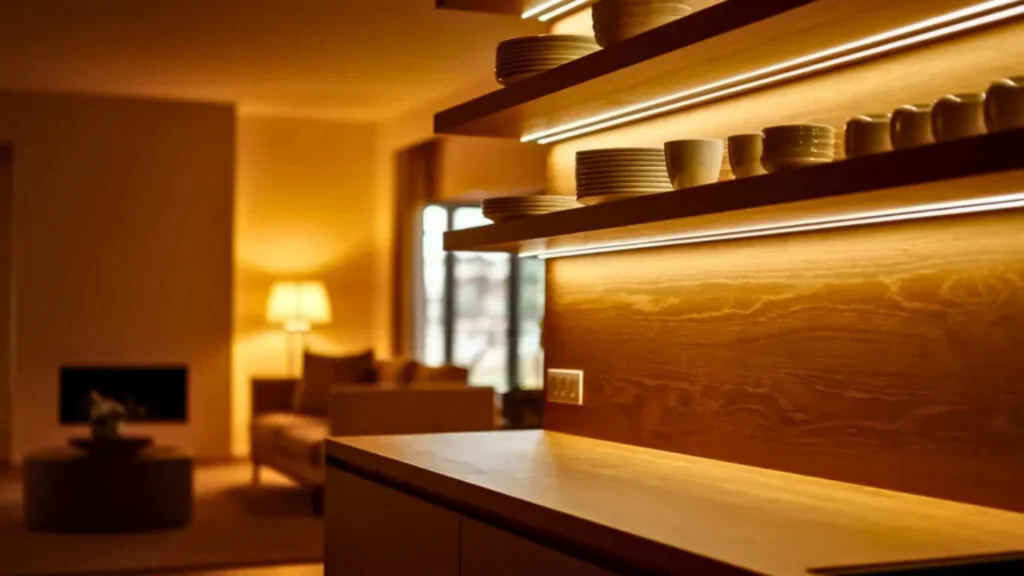
A room filled with bold colors can quickly become overwhelming if the hues don’t Lighting under open shelves adds both style and function. It helps highlight items on the shelf and sets that area apart from the rest of the room.
The kitchen can define storage zones or show off pretty dishes. In the living room, it separates shelves from seating. This type of lighting is subtle but makes a big difference in shaping how the space feels. helps give the space visual breaks and makes the bright colors feel more special.
7. Use Wall Sconces to Frame a Space
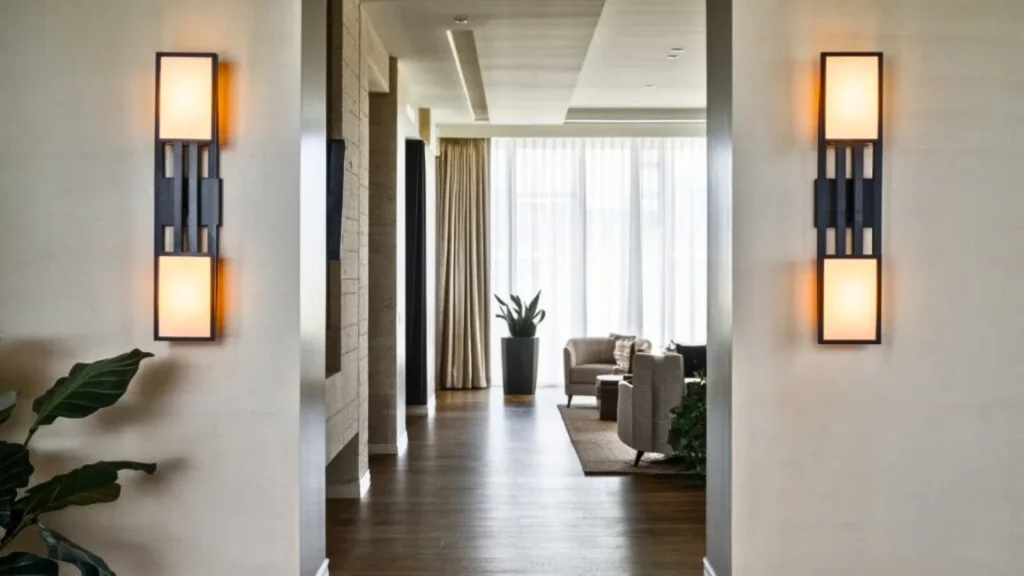
Wall sconces are great for pointing out special areas. Mount them beside a painting, doorway, or hallway entrance to create visual borders. They help separate parts of the room without taking up floor space.
Wall sconces work well in entry areas or around seating spots. Choose ones that match your home’s style so they blend in while still doing their job.
8. Create Layers with Table Lamps
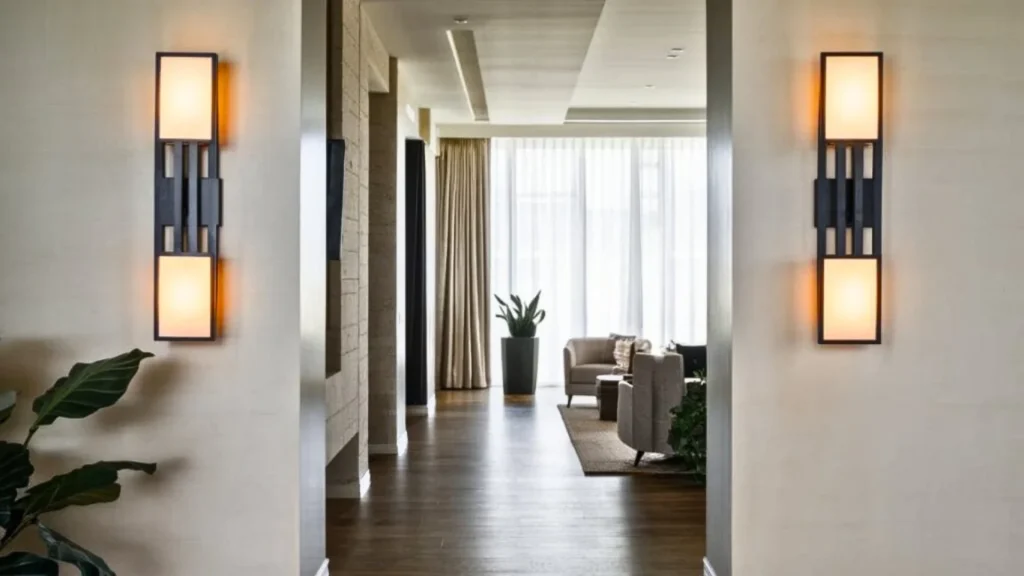
Table lamps add warmth and help create zones. Place one beside the couch to define a chat area. Add another on a side table to light up a reading chair. This kind of lighting adds depth to the room and makes it feel cozy.
It also helps people see which spaces are meant for relaxing or talking. Use a few around the room for an easy layered look.
9. Use Color-Changing Lights for Mood Zones
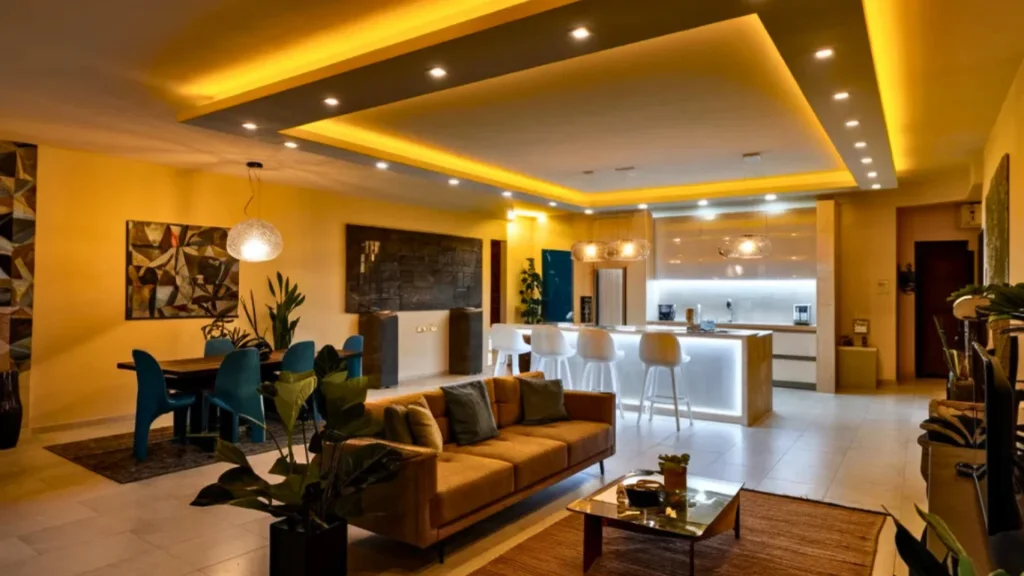
Smart bulbs that change color are a fun way to create zones. You can use warm colors in the living room to feel relaxed. Try cool or bright lights in the kitchen to stay alert while cooking.
These changes in color help each part of the room feel different. They’re also helpful when you want to change the mood for nighttime or parties.
10. Frame Entryways with Overhead Fixtures
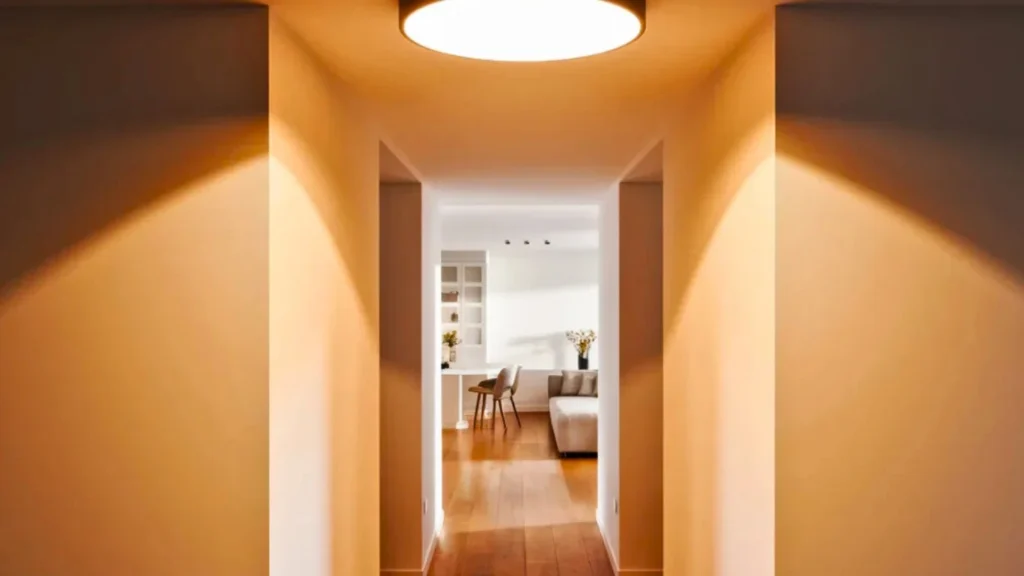
A small ceiling light above a hallway or entry clearly marks the space, letting people know they’re walking into a new zone. These lights help guide movement and add structure to open layouts. Try placing them at the start of the hallways or just inside the front door. It’s a simple way to make the flow of your home feel more organized.
Conclusion: ( Ways to Use Lighting )
Lighting does more than brighten a room—it shapes it. In an open-concept home, strategic lighting choices help you define each area with purpose and style. From pendant lights to portable lanterns, use these tips to make every part of your space feel just right.


